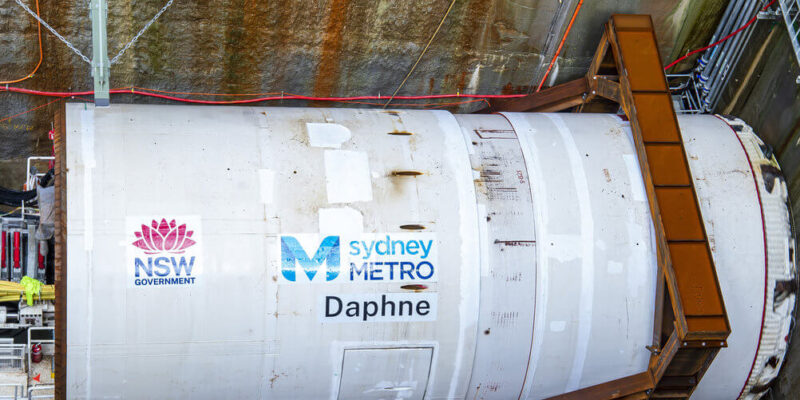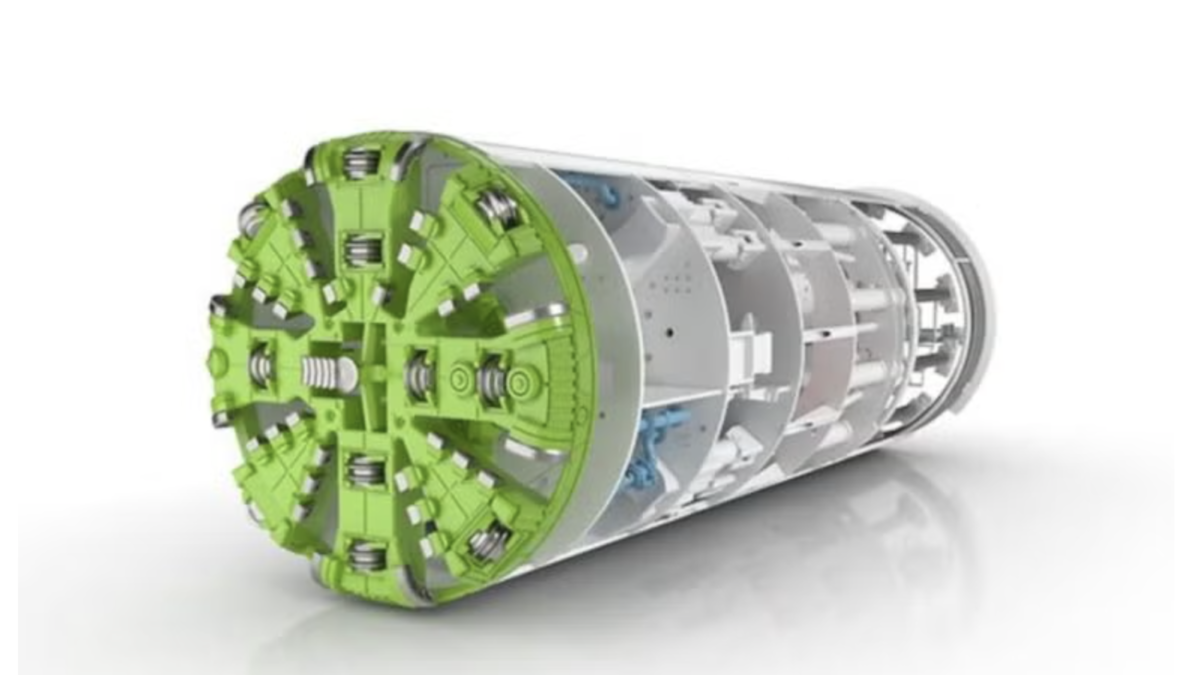
The tunnel boring machines, Daphne and Beatrice, are running the tunnels from The Bays to Sydney Olympic Park as part of Sydney Metro West. Daphne machine is already 327 m into its 11-km journey from The Bays to Sydney Olympic Park, and Beatrice machine is 373 m into its journey on the parallel tunnel. For tracking TBM Daphne and Beatrice’s journeys, click here. The tunnel boring machines utilize 3.8-t concrete segments (six for each ring) to line the tunnels.
Daphne has been named after the pioneer of Paralympic sport Daphne Hilton. Daphne Hilton was one of the most successful Australian athletes of all time and a trailblazer for women in sports. Daphne contested in three Paralympic Games between 1960 and 1968 and set a record that is unlikely to ever be broken— winning 14 medals across five different sports, including athletics, swimming, archery, table tennis, and fencing.
Tunnel boring machine Beatrice’s namesake is iconic local newspaper seller Beatrice Bush who sold newspapers for more than 25 years from the traffic island at the intersection of Victoria Road and The Crescent in White Bay. As roughly calculated, she sold five million papers between 1971 and 1996, passing away six days after she sold her last one. Her life motivated songwriters, filmmakers, sculptors, and painters.
In addition to the TBM boring, the construction of the tunnels comprises activities like the construction of cross passages and crossover caverns. Construction of the twin metro tunnels from The Bays to Sydney Olympic Park is part of the Central Tunnelling Package granted in July 2021 to the Acciona Ferrovial JV. As reported, Sydney Metro West will double the rail capacity between Sydney’s two most significant CBDs once passenger services start in 2030.
Moreover, on May 2023, two of three road headers began boring tunnels that will link the 24-km Sydney Metro West line to a new stabling and maintenance facility at Clyde. The road headers are 120-t, 4.8-m high, and 4.5-m wide and were lowered into a temporary access shaft at Clyde, which is almost 28-m below the surface.
A gigantic 750-ton mobile crane carefully lowered each road header into the shaft in parts, with the heaviest load weighing just more than 92 tons. Then, it took two days to assemble each TBM. The last road header will soon be assembled to assist with excavating the tunnels and two junction caverns that will enable trains to transfer from the underground railway tunnels to be stabled and undergo routine maintenance as required. Approximately 13 months will take for the road headers to excavate the tunnels and junction caverns.
Further information is available here.
















